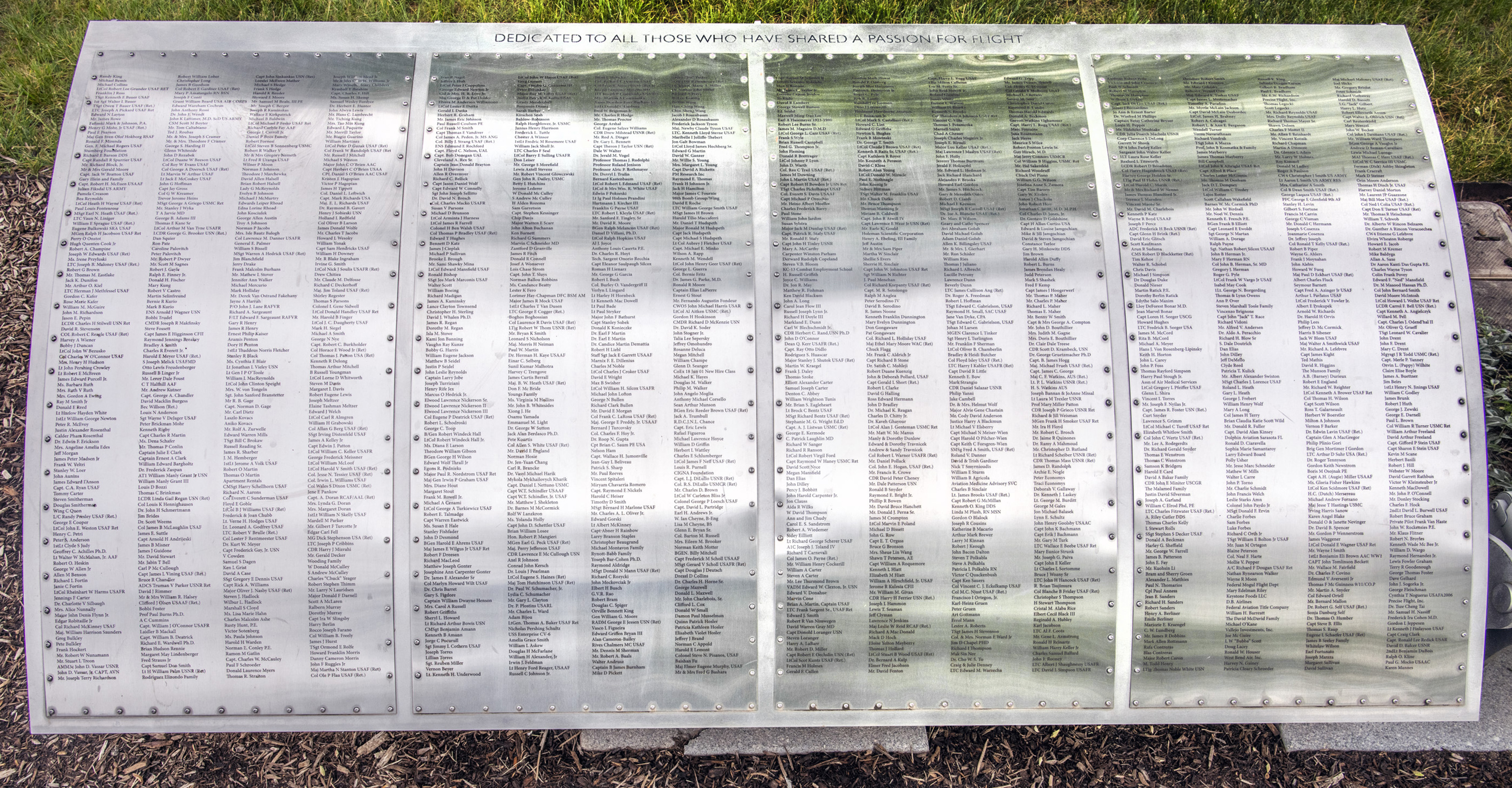Foil: 3 Panel: 1 Column: 1 Line: 38
Wall of Honor Level: Air and Space Friend
Honored by:
Ms. Gloria R. Champine
Robert A. Champine was research pilot with the National Advisory Committee for Aeronautics (NACA) and a pioneer in the Nation’s supersonic flight research program. On December 2, 1948, Bob became the 6th man and 3rd civilian to break the mysterious sound barrier. He exceeded Mach 1 on NACA flight 23 checking handling qualities and pressure distribution in the XS-1 #2, after having been dropped from the B-29 mother ship above the Rogers Dry Lake in California. He flew the fist NACA research flight of the Douglas D-558-I (Skystreak) on April 22, 1949, and the first NACA research flight of the D-558-II (Skyrocket) on May 24, 1949 initiating the supersonic research program for these aircraft on June 1, 1949.
In late 1950, after completing two years in the supersonic flight research program flying the hottest planes in the world, Bob returned to resume his career at the NACA Langley Memorial Aeronautical Laboratory in Hampton, Virginia. At Langley he became heavily involved in the study of flying qualities of airplanes to improve their performance, stability, and handling qualities.
During the mid-to-late 1950s, the NACA seriously began the quest for flight into space and Bob traveled to the Naval Air Development Center’s centrifuge at Johnsville, Pennsylvania to determine pilot tolerance to unknown “G” forces and for performance studies of orbital re-entry acceleration where he reached the level of 18Gs before becoming involved with the early development stages of the X-15 experimental aircraft research program.
Bob performed many flights with the Rendezvous Docking Simulator suspended high above the hangar floor at Langley to perfect the docking and rendezvous maneuvers of spacecraft being performed flawlessly by today’s astronauts. He spent many years during the mid-60s to develop the concepts of space flight, flight simulation, and vehicles to achieve a successful lunar landing. This included making the first flights at Langley’s Lunar Landing Research Facility (LLRF) simulating landing on the moon’s surface flying the experimental Lunar Excursion Module (LEM) to help prepare the astronauts for the final 150 feet of the lunar landing mission. This was done by simulating the lunar gravity environment with a full-scale LEM vehicle using an overhead partial-suspension system that provided a lifting force by means of cables acting through the LEM’s center of gravity, then flying it down to the surface which was modeled with fill dirt to resemble the landscape of the moon. As with all space missions, the successful completion of Apollo 11, and those missions following the landing of the first two astronauts on the moon, depended heavily on the development of an continual flight testing of exotic equipment like Langley’s Rendezvous Docking Simulator and the Lunar Landing research Facility, both of which were used for training the astronauts for their successful missions.
He flew far too many aircraft (over 158) for them all to be listed here, but in addition to those mentioned above, he flew the Parasev, L-39-1, G-159, JRF-5, F8F-1, F-51D, XF-82, XF-88B, F-86D, F-80, F-100, F-101A, F47D, T-38, B-57A, B-80, CV-720, CV-880M, C-47, and a large number of helicopters and vertical takeoff and landing platforms including the X-22, VZ-2, and the XC-142A. During his Naval career, he had also flown a variety of aircraft including the SNJ-5, SNB-2, PBY-5, AD-5, F4U, F6F, F8F, and F9F. In all, he tallied some 11,300 flying hours in these aircraft and many others. For his distinguished contributions to national aviation progress, Bob was elected to the Virginia Aviation Hall of Fame in 1979.
Bob graduated from the University of Minnesota in 1943 and was commissioned an Ensign in the U.S. Navy, where he flew many World War II fighter aircraft before joining the NACA at Langley in 1947. His flying career with the Navy, the NACA, and the NASA covered 36 years from 1943 to 1979, and he flew as a private pilot for 56 years from 1939 until making his last flight in a Fairchild PT-19 in 1995.
Wall of Honor profiles are provided by the honoree or the donor who added their name to the Wall of Honor. The Museum cannot validate all facts contained in the profiles.
Foil: 3
